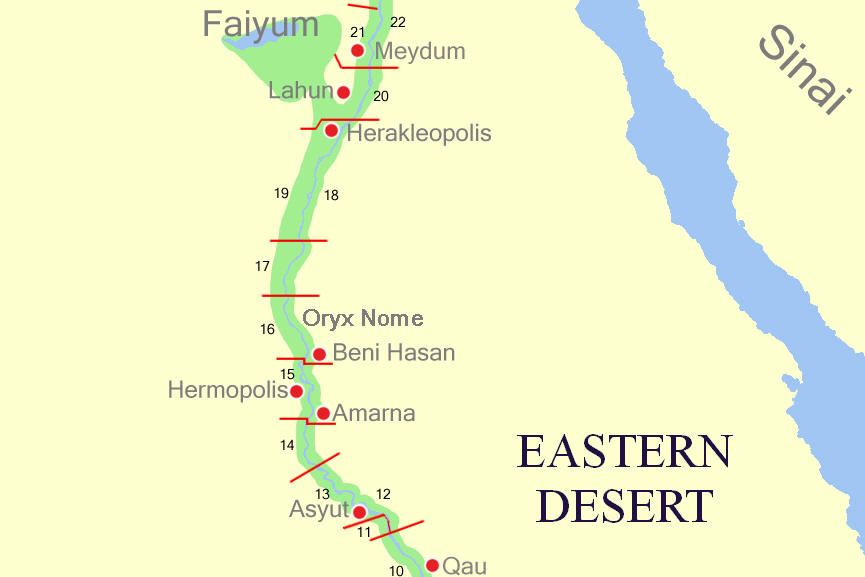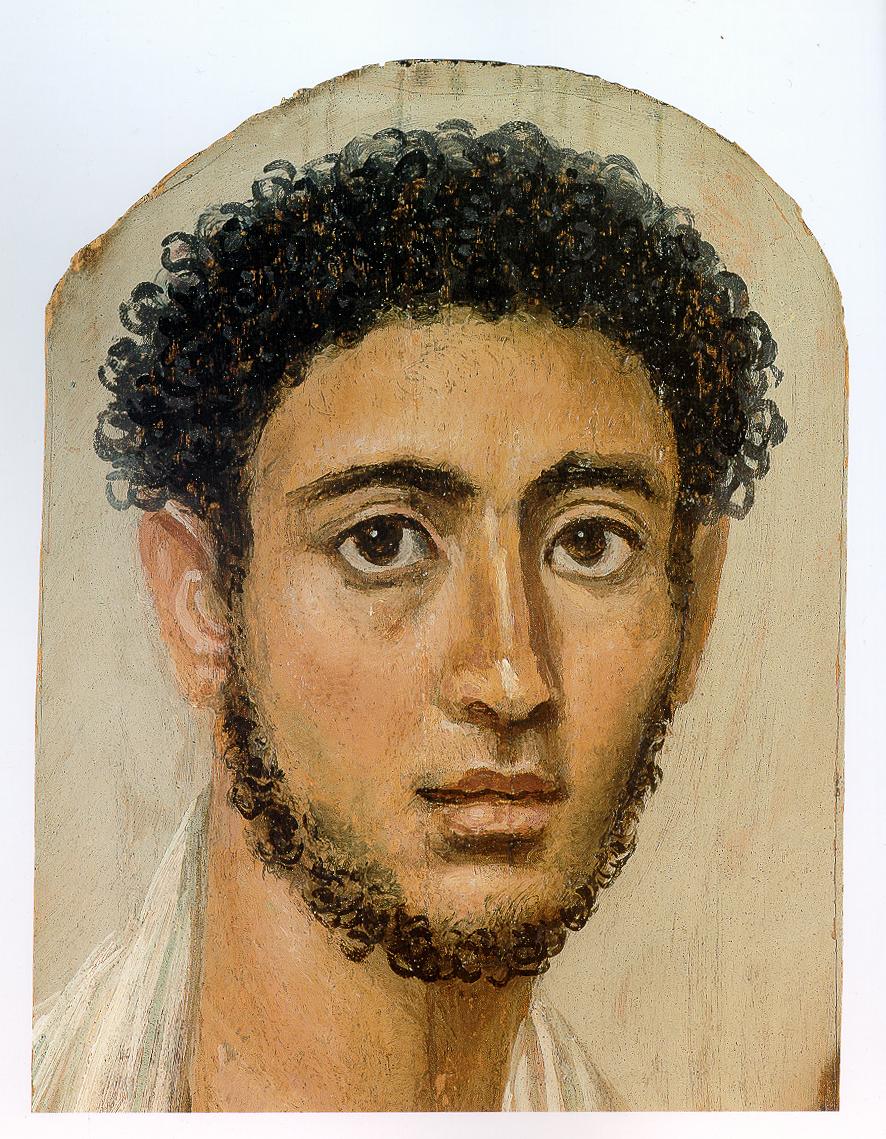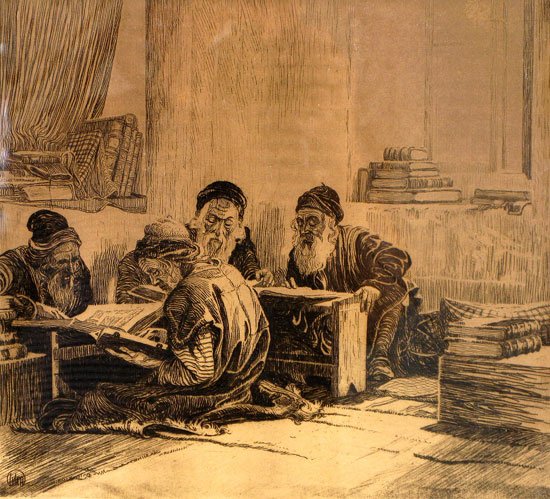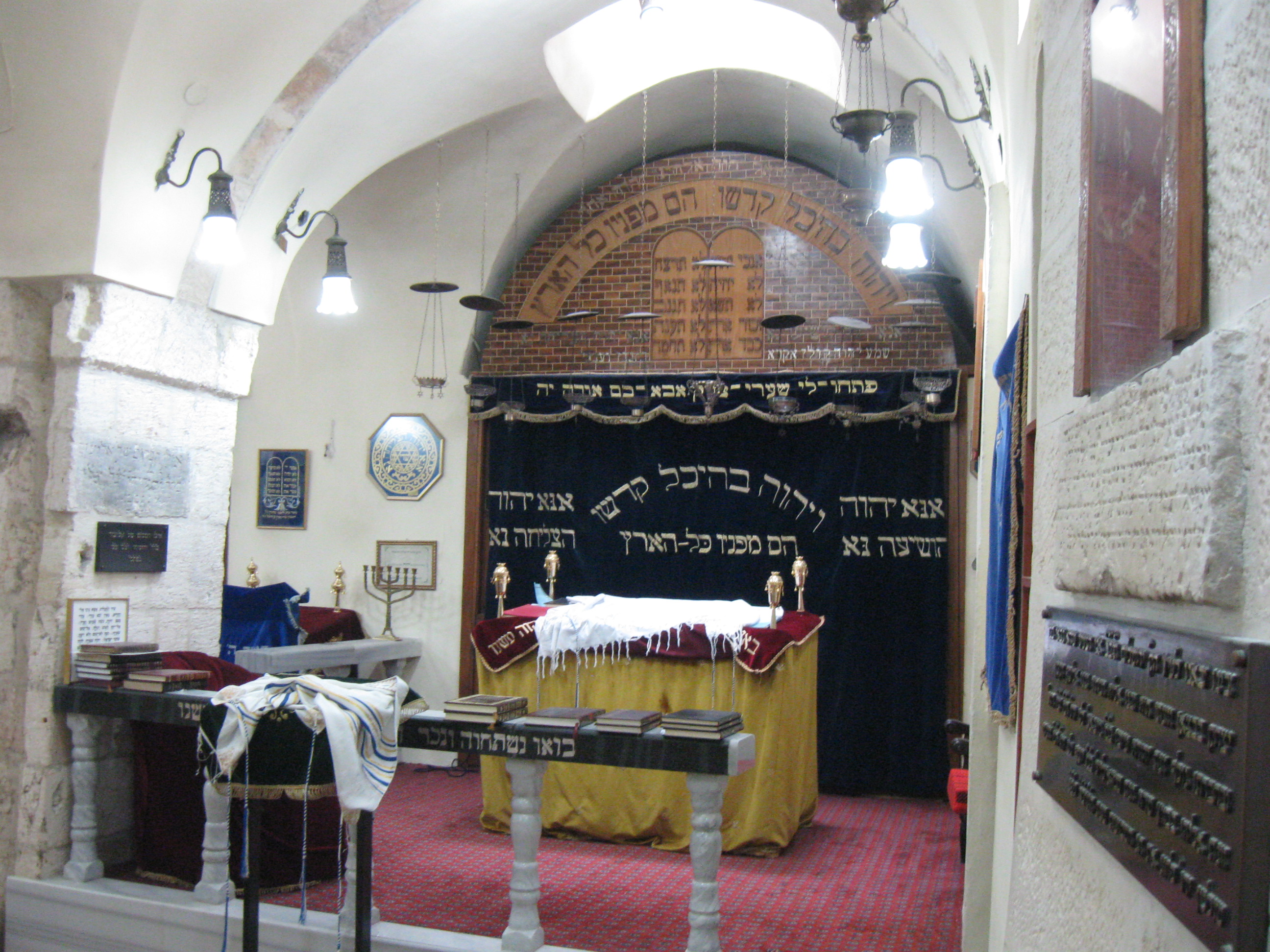|
Saadya Gaon
Saʿadia ben Yosef Gaon (892–942) was a prominent rabbi, gaon, Jewish philosopher, and exegete who was active in the Abbasid Caliphate. Saadia is the first important rabbinic figure to write extensively in Judeo-Arabic. Known for his works on Hebrew linguistics, ''Halakha'', and Jewish philosophy, he was a student of the philosophical school known as " Jewish Kalam". In this capacity, his philosophical work entitled ''The Book of Beliefs and Opinions'' represents the first systematic attempt to integrate Jewish theology with components of ancient Greek philosophy. Saadia was also very active in opposition to Karaite Judaism in defense of Rabbinic Judaism. Biography Early life Saadia was born in Dilāẓ in the Faiyum in Middle Egypt in 892. He immigrated to ancient Israel (in the Abbasid province of Bilad Al-Sham) in 915 at the age of 23, where he studied in Tiberias under the scholar Abu Kathir Yaḥya al-Katib (known as Eli ben Yehudah ha-Nazir in Hebrew), a Jewish mutaka ... [...More Info...] [...Related Items...] OR: [Wikipedia] [Google] [Baidu] |
Fayyum
Faiyum ( ; , ) is a city in Middle Egypt. Located southwest of Cairo, in the Faiyum Oasis, it is the capital of the modern Faiyum Governorate. It is one of Egypt's oldest cities due to its strategic location. Name and etymology Originally founded by the ancient Egyptians as Shedet, its current name in English is also spelled as Fayum, Faiyum or al-Faiyūm. Faiyum was also previously officially named Madīnat al-Faiyūm (Arabic for ''The City of Faiyum''). The name Faiyum (and its spelling variations) may also refer to the Faiyum Oasis, although it is commonly used by Egyptians today to refer to the city. The modern name of the city comes from Coptic / ' (whence also the personal name '), meaning ''the Sea'' or ''the Lake'', which in turn comes from late Egyptian ''pꜣ-ym'' of the same meaning, a reference to the nearby Lake Moeris; the extinct elephant ancestor '' Phiomia'' was named after it. Ancient history Archaeological evidence has found occupations around the ... [...More Info...] [...Related Items...] OR: [Wikipedia] [Google] [Baidu] |
Jewish Philosophy
Jewish philosophy () includes all philosophy carried out by Jews or in relation to the religion of Judaism. Until the modern ''Haskalah'' (Jewish Enlightenment) and Jewish emancipation, Jewish philosophy was preoccupied with attempts to reconcile coherent new ideas into the tradition of Rabbinic Judaism, thus organizing emergent ideas that are not necessarily Jewish into a uniquely Jewish scholastic framework and worldview. With their admission into broader modern society, Jews with secular educations embraced or developed entirely new philosophies to meet the world's demands in which they now found themselves. Medieval rediscovery of ancient Greek philosophy among the ''Geonim'' of 10th-century Babylonian academies brought Rationalism, rationalist philosophy into Tanakh, Biblical-Talmudic Judaism. During the ''Geonic'' period, philosophy was generally in competition with Kabbalah. Both schools would become part of classic Rabbinic literature, though the decline of scholastic r ... [...More Info...] [...Related Items...] OR: [Wikipedia] [Google] [Baidu] |
Talmudic Academies In Babylonia
The Talmudic academies in Babylonia, also known as the Geonic academies, were the center for Jewish scholarship and the development of Halakha during the Geonic era (from c. 589 to 1038 CE; Hebrew dates: 4349 AM to 4798 AM) in what is called "Babylonia" in Jewish sources. This term is neither geopolitically, nor geographically identical with the ancient empires of Babylonia, since the Jewish focus of interest has to do with the Jewish religious academies, which were mainly situated in an area between the rivers Tigris and Euphrates and primarily between Pumbedita (modern Fallujah, a town west of Baghdad), and Sura, a town farther south down the Euphrates. At the time this area was part of the region known as Asōristān (under the Sasanian Empire) or Iraq (under the Muslim caliphate until the 11th century). The key work of these academies was the compilation of the Babylonian Talmud, started by Rav Ashi and Ravina, two leaders of the Babylonian Jewish community, around t ... [...More Info...] [...Related Items...] OR: [Wikipedia] [Google] [Baidu] |
Lower Mesopotamia
Lower Mesopotamia is a historical region of Mesopotamia. It is located in the alluvial plain of Iraq from the Hamrin Mountains to the Faw Peninsula near the Persian Gulf. In the Middle Ages it was also known as the '' Sawad'' and al-Jazira al-sflia ("Lower Jazira"), which strictly speaking designated only the southern alluvial plain, and Arab Iraq, as opposed to Persian Iraq, the Jibal. Lower Mesopotamia was home to Sumer and Babylonia. Delimitation The medieval Arab geographers placed the northern border between Iraq and Upper Mesopotamia (the ''Jazirah'') in a line running from Anbar on the Euphrates to Tikrit on the Tigris, although later it was shifted to a line running due west from Tikrit, thus including several towns on the Euphrates past Anbar into Iraq. Geography An alluvial plain begins north of Tikrit Near Hamrin Mountains and extends to the Persian Gulf. Here the Tigris and Euphrates lie above the level of the plain in many places, and the whole area is a rive ... [...More Info...] [...Related Items...] OR: [Wikipedia] [Google] [Baidu] |
Ibn Hazm
Ibn Hazm (; November 994 – 15 August 1064) was an Andalusian Muslim polymath, historian, traditionist, jurist, philosopher, and theologian, born in the Córdoban Caliphate, present-day Spain. Described as one of the strictest hadith interpreters, Ibn Hazm was a leading proponent and codifier of the Zahiri school of Islamic jurisprudence, and produced a reported 400 works, of which only 40 still survive.Joseph A. KechichianA mind of his own Gulf News: 21:30 December 20, 2012. In all, his written works amounted to some 80,000 pages. Also described as one of the fathers of comparative religion, the ''Encyclopaedia of Islam'' refers to him as having been one of the leading thinkers of the Muslim world. Personal life Lineage Ibn Hazm's grandfather Sa'id and his father, Ahmad, both held high advisory positions in the court of Umayyad Caliph Hisham II. Scholars believe that they were Iberian Christians who converted to Islam ('' Muwallads''). al-Dhahabi said: "Ali Ibn Ahmad ... [...More Info...] [...Related Items...] OR: [Wikipedia] [Google] [Baidu] |
Mutakallim
''Ilm al-kalam'' or ''ilm al-lahut'', often shortened to ''kalam'', is the scholastic, speculative, or rational study of Islamic theology ('' aqida''). It can also be defined as the science that studies the fundamental doctrines of Islamic faith ('' usul al-din''), proving their validity, or refuting doubts regarding them. Kalām was born out of the need to establish and defend the tenets of Islam against the philosophical doubters, and to defend against heretical and religious innovations (''bidʿah''). A scholar of ''kalam'' is referred to as a ''mutakallim'' (plural ''mutakallimun''), a role distinguished from those of Islamic philosophers and jurists. After its first beginnings in the late Umayyad period, the Kalām experienced its rise in the early Abbasid period, when the Caliph al-Mahdi commissioned Mutakallimūn to write books against the followers of Iranian religions, and the Barmakid vizier Yahya ibn Khalid held Kalām discussions with members of various rel ... [...More Info...] [...Related Items...] OR: [Wikipedia] [Google] [Baidu] |
Eli Ben Yehudah Ha-Nazir
Eli ben Yehudah ha Nazir ben Zechariah, Arabic Abu Kathir Yahya al Katib ("Father of Kathir, Yahya the Scribe", fl. Tiberias, 910s), was a grammarian and philologist of the Hebrew, Arabic and Aramaic languages. He may have been among the teachers in Tiberias of Saadia. His Arabic language treatise is entitled ''Usul al-Lugha al-'ibraniyya'' (c. 915) أصول اللغة العبرانيّة ("Origins of the Hebrew language").Ra'anan S. Boustan, Raʻanan S. Boustan, Oren Kosansky ''Jewish studies at the crossroads of anthropology and history'' p221 2011 "44 Among those who expressed this belief was 'Eli ben Yehudah ha-Nazir, a native of Tiberias, who wrote in a linguistic treatise of ca. 915 that when he had doubts about the accuracy of his work on the language of the Bible, .." He also commented on the opinion regarding the dagesh pronunciation of the Hebrew letter Resh Resh is the twentieth Letter (alphabet), letter of the Semitic abjads, including Phoenician alphabet, Phoen ... [...More Info...] [...Related Items...] OR: [Wikipedia] [Google] [Baidu] |
Tiberias
Tiberias ( ; , ; ) is a city on the western shore of the Sea of Galilee in northern Israel. A major Jewish center during Late Antiquity, it has been considered since the 16th century one of Judaism's Four Holy Cities, along with Jerusalem, Hebron, and Safed. In , it had a population of . Tiberias was founded around 20 CE by Herod Antipas and was named after Roman emperor Tiberius. It became a major political and religious hub of the Jews in the Land of Israel after the destruction of Jerusalem and the desolation of Judea during the Jewish–Roman wars. From the time of the second through the tenth centuries CE, Tiberias was the largest Jewish city in Galilee, and much of the Mishna and the Jerusalem Talmud were compiled there. Tiberias flourished during the Early Muslim period, when it served as the capital of Jund al-Urdunn and became a multi-cultural trading center.Hirschfeld, Y. (2007). Post-Roman Tiberias: between East and West. ''Post-Roman Towns, Trade and Settle ... [...More Info...] [...Related Items...] OR: [Wikipedia] [Google] [Baidu] |
Middle Egypt
Middle Egypt () is the section of land between Lower Egypt (the Nile Delta) and Upper Egypt, stretching upstream from Asyut in the south to Memphis, Egypt, Memphis in the north. At the time, Ancient Egypt was divided into Lower and Upper Egypt, though Middle Egypt was technically a subdivision of Upper Egypt. It was not until the 19th century that archaeologists felt the need to divide Upper Egypt in two. As a result, they coined the term "Middle Egypt" for the stretch of river between Cairo and the Qena Bend. It was also associated with a region termed "#Heptanomis, Heptanomis" (; Greek language, Greek: , in Ptol. iv. 5. § 55; more properly or , in Dionysius Periegetes 251; and sometimes ; meaning "Seven Nomes", a "nome (Egypt), nome" being a subdivision of ancient Egypt), generally as the district which separates the Thebaid, Thebaïd from the Nile Delta, Delta. Middle Egypt today can be identified as the part of the Nile Valley that, while geographically part of Upper Egypt, ... [...More Info...] [...Related Items...] OR: [Wikipedia] [Google] [Baidu] |
Faiyum
Faiyum ( ; , ) is a city in Middle Egypt. Located southwest of Cairo, in the Faiyum Oasis, it is the capital of the modern Faiyum Governorate. It is one of Egypt's oldest cities due to its strategic location. Name and etymology Originally founded by the ancient Egyptians as Shedet, its current name in English is also spelled as Fayum, Faiyum or al-Faiyūm. Faiyum was also previously officially named Madīnat al-Faiyūm (Arabic language, Arabic for ''The City of Faiyum''). The name Faiyum (and its spelling variations) may also refer to the Faiyum Oasis, although it is commonly used by Egyptians today to refer to the city. The modern name of the city comes from Coptic language, Coptic / ' (whence also the personal name '), meaning ''the Sea'' or ''the Lake'', which in turn comes from late Egyptian language, Egyptian ''pꜣ-ym'' of the same meaning, a reference to the nearby Lake Moeris; the extinct elephant ancestor ''Phiomia'' was named after it. Ancient history Archaeo ... [...More Info...] [...Related Items...] OR: [Wikipedia] [Google] [Baidu] |
Rabbinic Judaism
Rabbinic Judaism (), also called Rabbinism, Rabbinicism, Rabbanite Judaism, or Talmudic Judaism, is rooted in the many forms of Judaism that coexisted and together formed Second Temple Judaism in the land of Israel, giving birth to classical rabbinic Judaism, which flourished from the 1st century CE to the final redaction of the Babylonian Talmud in c. 600. Mainly developing after the destruction of the Jerusalem Temple (70 CE), it eventually became the normative form of Judaism. Rabbinic Judaism has been an orthodox form of Judaism since the 6th century CE, after the codification of the Babylonian Talmud. It has its roots in the Pharisaic school of Second Temple Judaism and is based on the belief that Moses at Mount Sinai received both the Written Torah (''Torah she-be-Khetav'') and the Oral Torah (''Torah she-be-al Peh'') from God. The Oral Torah explains the Written Torah, and it was the rabbis claimed that it was them who possessed this memorized and orally transmitte ... [...More Info...] [...Related Items...] OR: [Wikipedia] [Google] [Baidu] |
Karaite Judaism
Karaite Judaism or Karaism is a Rabbinic Judaism, non-Rabbinical Jewish religious movements, Jewish sect characterized by the recognition of the written Tanakh alone as its supreme religious text, authority in ''halakha'' (religious law) and theology. Karaites believe that all of the Mitzvah, divine commandments which were handed down to Moses by God were recorded in the written Torah without any additional Oral Torah, Oral Law or explanation. Unlike mainstream Rabbinic Judaism, which regards the Oral Torah, codified in the Talmud and subsequent works, as authoritative interpretations of the Torah, Karaite Jews do not treat the written collections of the oral tradition in the Midrash or the Talmud as binding. Karaite interpretation of the Torah strives to adhere to the plain or most obvious meaning (''peshat'') of the text; this is not necessarily the literal meaning of the text—instead, it is the meaning of the text that would have been naturally understood by the ancient He ... [...More Info...] [...Related Items...] OR: [Wikipedia] [Google] [Baidu] |








